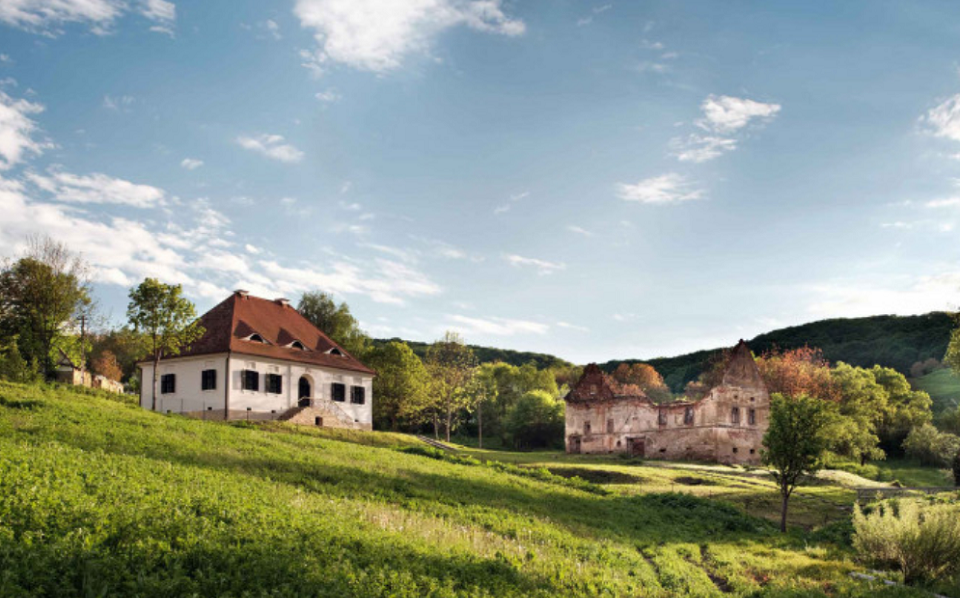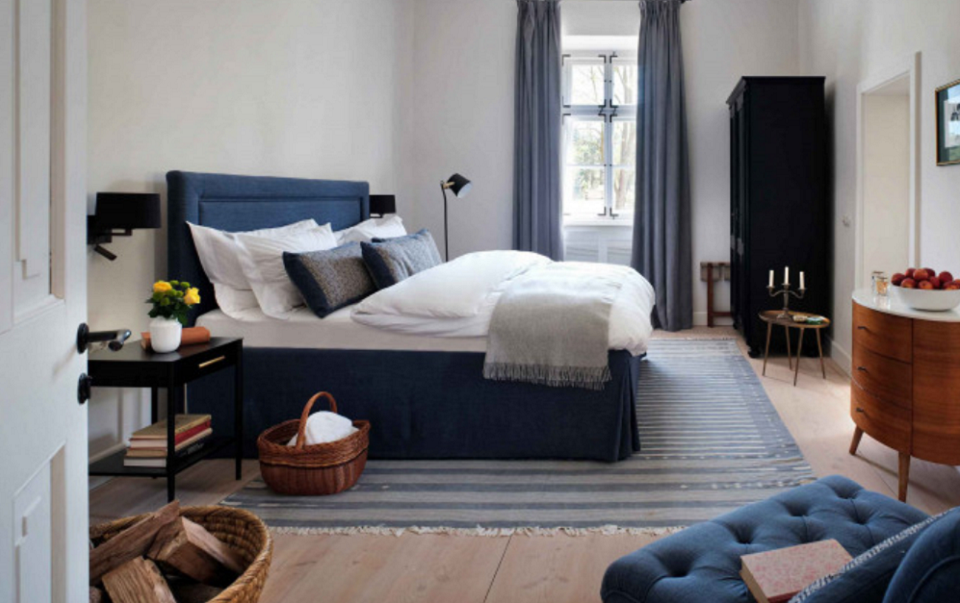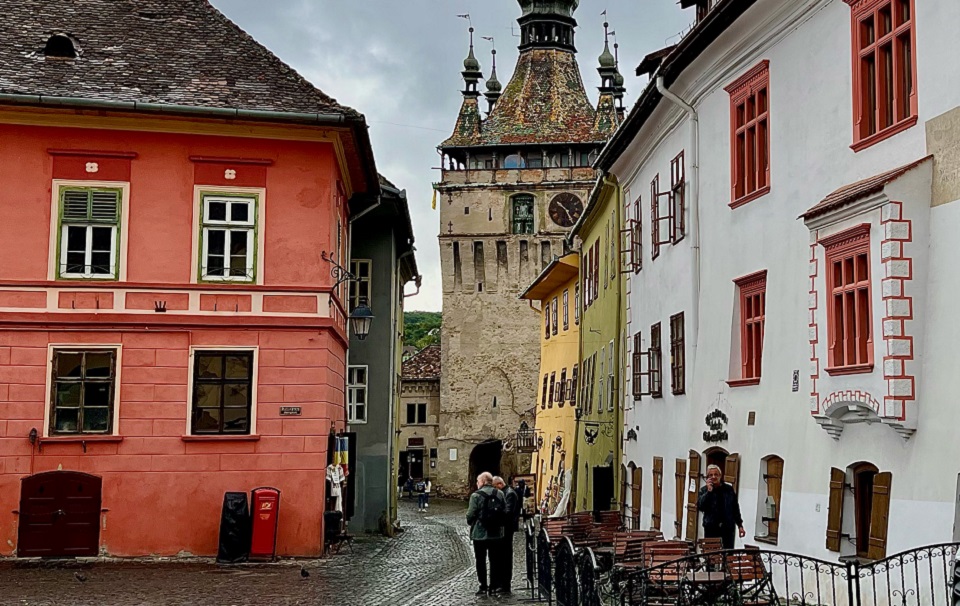Vampire hunting in Transylvania

It’s been 125 years since Bram Stoker published Dracula, the novel partially set in the vast, untouched landscapes of Transylvania. Much has changed since then, but the destination remains—as one character puts it—”one of the wildest and least known portions of Europe.” With hillsides darkened by dense forests, pastoral farms toiled by horse and cart and red-roofed Saxon villages unbothered by time, this land remains resolutely rooted in tradition and visiting can feel like a trip to another century.
It’s surreal – and yes, perhaps a bit creepy – to see the birthplace of the legendary figure. Over a hundred years of literary history began here
The history-rich region of Transylvania is in the heart of Romania, bordered in a semi-circle by the mythic Carpathian Mountains. It’s almost impossible to mention Transylvania and not think of Dracula, thanks to the 1897 novel (though Stoker never visited) and the countless film and television adaptations over the past century. Vlad Dracula (a.k.a. Vlad the Impaler), said to be Count Dracula’s inspiration, actually existed: he was the ruler of the neighbouring region of Walachia in the 1400s, though he may have been born in Transylvania.

A violent warlord, historical records confirm his enemies were impaled on stakes, and ghoulish rumours swirled that said he’d even dip his bread in the blood of the dying. It’s easy to see how these legends – and the mysterious region, rich in vampiric folklore – has inspired countless Dracula films and spin-off films like Van Helsing and Twilight.
The dark woods look exactly like where I’d imagine Count Dracula himself may hide, and it’s thrilling to get out in them on foot, but there’s not much by way of gruesome stories of vampires when I check into Bethlen Estates, one of the few luxury hotels in these parts. It was conceived by another Count: the late Count Miklós Bethlen, and now led by his mother and son, Gladys and Nikolaus Bethlen. For the last 15 years, the family—one of the great aristocratic lines of Transylvania—has been slowly acquiring and reimagining tumbledown buildings on their ancestral lands in the village of Criş to form this country-chic collection of homes. Encircled by ancient fruit trees and warmly outfitted in posies of dried wildflowers, wood-burning stoves and reclaimed timber beams, the first three restored houses are now open.

The newest is the four-key Corner Barn, a 300-year-old former haybarn, but the most enchanting is inarguably the exclusive-use, four-room Caretaker’s House. There’s plenty to keep you busy including a recently unveiled private swimming pool and charm-filled library stocked with whiskey, records and leather-bound tomes. With an airy pitched roof, freestanding fire and Scandi-cool blond wood interiors, Bethlen Estates’ Kitchen Barn serves feasts of modern country fare. Breakfast is an event with paprika-dusted farm eggs, honeyed pancakes and baskets of fresh bread. There’s no menu at dinner or lunch, but expect stylishly presented dishes of Hungarian lamb stew, roasted mountain rooster and cherry-drizzled duck breast—all sourced from within 15 miles of the estate.
Sip a frosty Bethlen blond beer, brewed in nearby Sibiu, or finish the night with a fiery nip of homemade palinka, brandy made from apples, pears and grapes grown on the Estate. I also sampled some of Romania’s native grape varietals (like the gothically named Fetească Neagră or black maiden) at a candle-lit wine tasting in the spooky and atmospheric cellars of Count János Bethlen’s Manor House, which is currently in the midst of a full-scale restoration. Bethlen Estates can plan all sorts of excursions including bird-watching, horseback riding, truffle hunting and historical tours. Largely dating back to the seventeenth century, the turreted Castle Bethlen is just a short walk away, and tours can be arranged with a local archaeologist.
With crumbling spired towers and impressive clock towers, there are also vampire themed souvenirs at every turn, as this is one of the suspected birthplaces of Vlad the Impaler.
Bear watching can also be done close to home: you head out in the soft blue glow of twilight, a bit like a werewolf, dare we say it, and off-road through the hillsides in an old-school Land Rover Defender. It’s a remarkable experience, looking for bears. All that time spent staring into the middle distance in the hope of spotting one makes you feel much closer to nature —even if you don’t see any in the end. The wilds of Transylvania are home to lynxes and wolves too, but don’t let that put you off hiking—just book a local guide or bring bear spray to be safe. (You’re on your own if you come across any vampires though.)
There are no shortage of mediaeval villages and fortified churches to visit in the area, but the UNESCO-sanctioned hilltop citadel of Sighișoara should be at the top of your list, with crumbling spired towers— once manned by Saxon gilds—and an impressive enamel-tiled mechanical clock tower. There are also kitchy vampire themed souvenirs at every turn, as the citadel is one of the suspected birthplaces of Vlad the Impaler.

It’s surreal – and yes, perhaps a bit creepy – to see the birthplace of the legendary figure. Over a hundred years of literary history began here; and, I have to say, I felt a chill in the air as I walked the cobblestone streets and thought back to Stoker’s descriptions of Dracula’s nocturnal exploits. Spooky, but more interesting than actually scary: remembers readers, Dracula only exists in the pages of a novel. (Unless you imagine really hard…)
Don’t worry: I felt as far removed from the murderous Count as possible at Bethlen Estates, where I ate my non-bloodsoaked bread in glorious peace.
Visit Transylvania yourself
Târgu Mureș Transilvania Airport is the main hub, with direct flights to London Luton. Mr and Mrs Smith offers stays at Bethlen Estates with rates at The Caretaker’s House starting at £524; 0330 100 3180; Mrandmrssmith.com